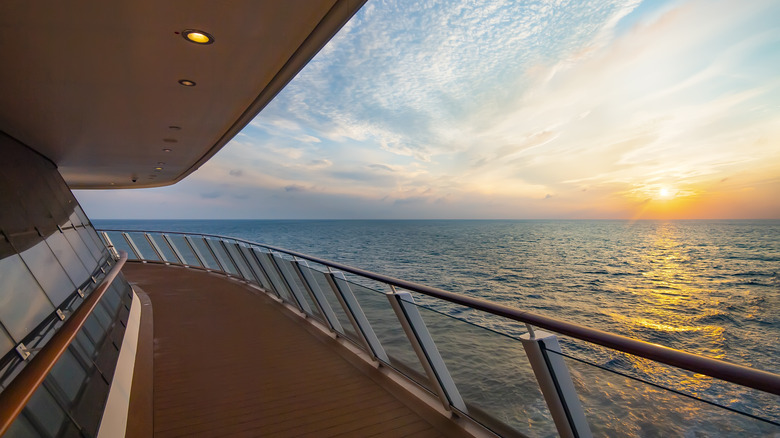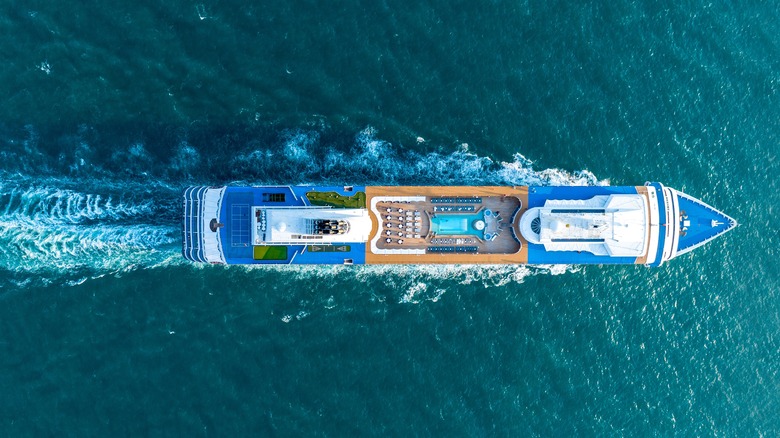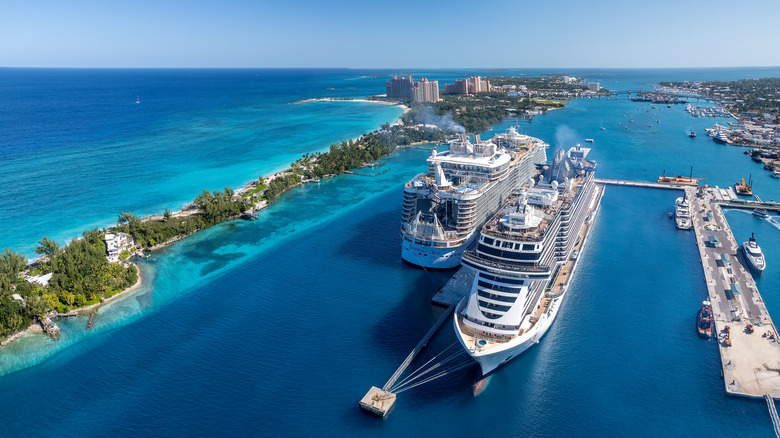The US-Banned Type Of Cruise You Probably Didn't Even Know Existed
You've heard of the road to nowhere, but what exactly is a cruise to nowhere, and why do people take them? Well, these types of cruises are short trips that leave the port for a journey into the ocean but return to where they came from without docking anywhere. While some travelers may not have known they existed, these cruises were available from U.S. ports until 2015. However, they were halted by the Department of Homeland Security's Customs and Border Protection when they reiterated their rules to cruise companies in 2016.
It may sound like a strange idea for those who love to travel and explore new places, but there are reasons why people choose a cruise without a destination. For one, it was a good way to see if you enjoyed the experience for a few days prior to booking a week's vacation aboard a leisure liner. It was also an opportunity to test out the entertainment available and take a last-minute break in what is essentially a floating hotel. And for those on a budget, a cruise to nowhere was a chance to try something they wouldn't be able to do otherwise. However, due to the enforcement of existing visa regulations and immigration laws, it seems unlikely to restart in the U.S. anytime soon.
The issues with cruises to nowhere
While it may appear to be a new regulation that stopped cruises to nowhere, according to a 2015 customs statement via Travel Weekly, they were never technically legal. It is a longstanding federal ruling known as "the Jones Act" (or the Merchant Marine Act of 1920), which orders all ships traveling between U.S. ports be made by vessels constructed in the country, with an all-American crew and flag.
In this case, the problem for cruise liners was the vast majority of them were "foreign-flagged," meaning they registered abroad with an international crew, which couldn't be done. However, cruises are covered by an offshoot law, the Passenger Vessel Services Act of 1886, which says foreign vessels must dock outside the U.S. as part of their itineraries. Cruise ship staff usually travel on D-1 visas, meaning they can only be at a U.S. port for a temporary stay and not "depart" from one for a cruise to nowhere. So, in theory, cruises to nowhere can continue if they have an all-American crew, ship, and flag. However, as this is rare, it is easier for the industry to stop the practice altogether. Still, there are other ways to go on a cruise without spending too much time or money.
Alternatives to a cruise to nowhere
Instead of a cruise to nowhere, try a short one. These tend to depart from the bigger ports with easy access to popular destinations like the Caribbean and Mexico. The experts at Cruiseline.com recommend Miami as "the number one port for short cruises." One of the shortest you can take is a two-night jaunt to the Bahamas. There are also options to stay longer or travel to ports in the East or West Caribbean if you want to explore a little longer.
Another good port for short cruises is L.A. because from there it's easy to travel down to Baja California, in Mexico. Some stop at California's Catalina Island and others take in the popular Mexican city of Cabo San Lucas. There are also short cruises that go north and visit places like Santa Barbara or even Victoria and Vancouver in Canada. Wherever you choose to go, a short cruise is an ideal opportunity to experience the wonders that a leisure liner has to offer.


